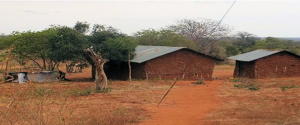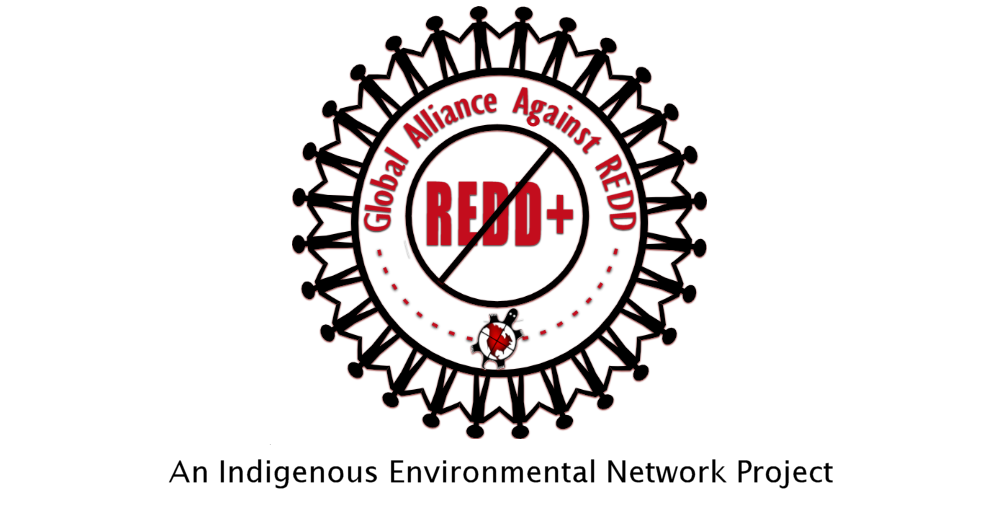Kenya: International Finance Corporation throws lifeline to REDD+ project and provides greenwashing for the largest mining company in the world
 BHP Billiton is the world’s largest mining and petroleum company running mines in 13 countries. Its main offices are in Melbourne, Australia, and in London, UK, where the company sells shares on the London Stock Exchange.
BHP Billiton is the world’s largest mining and petroleum company running mines in 13 countries. Its main offices are in Melbourne, Australia, and in London, UK, where the company sells shares on the London Stock Exchange.
The London Mining Network, an alliance of human rights, development, environmental and solidarity groups, has compiled information about the many conflicts between the company and communities and workers affected by its mining operations and environmental disasters caused by the company’s mines. (1) These include the catastrophic flood of 40 million tonnes of toxic mud waste released into the Doce river in Minas Gerais, Brazil, in 2015 – the biggest environmental spill in the country’s history. (2) The toxic mud spread all the way to the sea, killing 19 people and requiring the evacuation of 600 more. Almost two years on, the Doce river still runs red from the iron ore in the water. BHP Billiton co-owns the mine with Brazilian mining firm, Vale. The two companies have faced public campaigns over inadequate clean-up efforts and compensation to those affected by the disaster. They also face fines and national and international legal cases over responsibility for the breach of the dam that was supposed to prevent their toxic waste from spilling into the river.
Bail-out for REDD+ project in Kenya provides greenwashing for BHP Billiton
In October 2016 – almost exactly one year after the toxic spill at the BHP Billiton mine in Brazil – the World Bank’s International Finance Corporation (IFC) (3) raised US 152 million dollars from private investors through the sale of what they named “forests bond”. (4) Investment funds and banks could buy the “forests bond”. Buying the bond means they lend their money to the IFC for five years during which the IFC uses the money to fund infrastructure and other corporate projects. At regular intervals, usually every year, the buyers of the bond receive interest payments from the IFC. After five years, the IFC has to pay back the money to the bond buyers: the investors swap the bond again for the money they originally invested. The IFC calls the bond “forests” bond because buyers can choose to receive their annual interest payment either in cash or as carbon credits from a REDD+ project (5) in Kenya, called the Kasigau Corridor REDD+ project that claims to protect forests.
Italian social and environmental justice group Re:Common and the European Counter Balance network visited the Kasigau Corridor REDD+ project area in July 2016 and documented evidence of ongoing negative impacts on local peasant communities. (6) The report confirms findings published in an article in 2015 (7) that describes how the REDD+ project strengthens historical injustices over land allocation: those most affected by the restrictions the REDD+ projects puts on land use, mainly ethnic Taita communities, receive very few benefits while (absentee) ranch shareholders receive a guaranteed 1/3 of the revenues from REDD+ credit sales.
For the five years that buyers of the “forests bond” receive interest payments, IFC has committed to buying carbon credits from the Kasigau Corridor REDD+ project (Phase I and II). If a buyer prefers to receive the interest payment in cash, BHP Billiton will buy the REDD+ credits from the IFC instead and thus provide the cash for the interest payment to the “forests bond” buyer. That means five years of guaranteed REDD+ credit sales for the California-based company Wildlife Works Carbon, which set up the Kasigau Corridor REDD+ project and the financial architecture of it. The company had just months before seen a big REDD+ credit sales agreement with a Luxembourg-based carbon market fund (Althelia Climate Fund) collapse. Finding a replacement soon might well have been a question of survival for the REDD+ project.
For BHP Billiton, the commitment to buying REDD+ credits at a fixed price of US 5 dollars if buyers don’t want them, provides green cover for its dirty mining and an opportunity to deflect global attention away from its responsibility for Brazil’s largest environmental disaster that still has dire consequences for the local population along the Doce river. Also involved in the “forests bond” deal is Conservation International (CI), a US-based conservation NGO. CI advised BHP Billiton on the “forests bond”, sits on the Althelia Climate Fund’s Expert Board, is involved in a REDD+ project near the Kasigau Corridor REDD+ project and is among the most vocal REDD+ supporters.
The IFC’s “forests bond” is a dubious new way of propping up private sector REDD+ projects that have been unable to sell their carbon credits. The misleading name “forests” bond also suggests that there is more private sector investment for “forests” than there really is as the capital invested does not go into forest-related activities. The actual money loaned to IFC – the US 152 million dollars it got from buyers of the “forests bond” – is invested in the sort of corporate projects the IFC usually funds. The bondholders only forego a portion of their interest payments they receive from the IFC and accept to take these in the form of REDD+ credits rather than cash – or if the bondholder does not want them, BHP Billiton will take them and make a cash payment to the bond holder. The IFC works with the conservation industry to re-label a corporate investment as a “forests bond”, even though only (part of) the interest IFC pays to the buyer of the “bond” is used to subsidise a forest / REDD+ project.
So, in addition to more investment that may well cause harm to local communities, the IFC throws a lifeline to a REDD+ project run by a private company that is severely restricting land use of ethnic Taita communities in Kenya’s Kasigau Corridor area. Moreover, it presents the world’s largest mining company with responsibility for Brazil’s largest environmental disaster, BHP Billiton, with an opportunity to greenwash its image by offering to buy any Kasigau Corridor REDD+ credits that buyers of the IFC “forests bond” may not want. A triple win for the corporate sector, the conservation industry and the World Bank, with the costs borne by local communities and the climate.
Jutta Kill, jutta [at] wrm.org.uy
Member of the WRM International Secretariat
(2) Brazil’s River of Mud. Aljazeera documentary film.
(3) The International Finance Corporation is the part of the World Bank Group that provides financing for the corporate sector.
(4) IFC Press release IFC Issues Innovative $152 Million Bond to Protect Forests and Deepen Carbon-Credit Markets.
(5) REDD+ stands for Reducing Emissions from Deforestation and Forest Degradation. For more information, see http://wrm.org.uy/browse-by-
(6) Counter Balance (2016): The Kasigau Corridor REDD+ Project in Kenya: A crash dive for Althelia Climate Fund. And: Re:Common (2016) Mad Carbon Laundering. How the IFC subsidies mining companies and failing REDD projects. Briefing in cooperation with Counter Balance.
(7) S. Chomba et al. (2016): Roots of inequity: How the implementation of REDD+ reinforces past injustices. Land Use Policy. Volume 50: 202–213.
